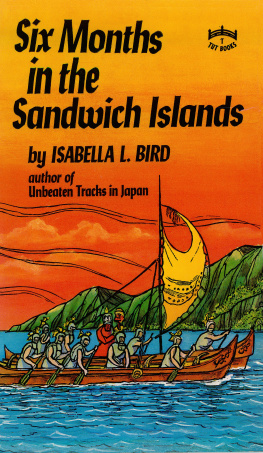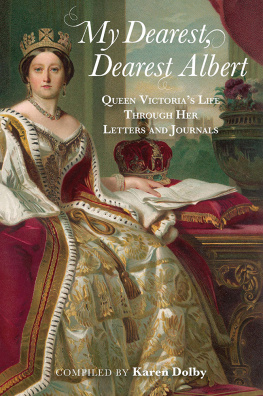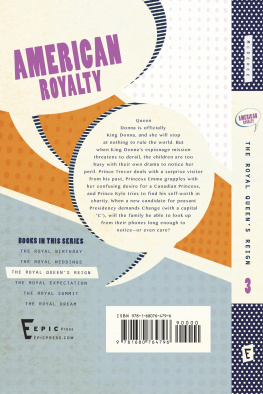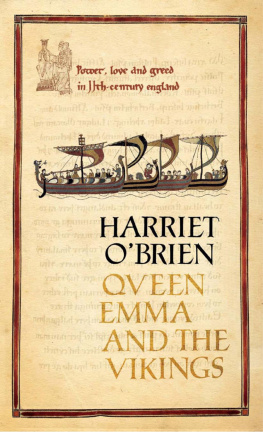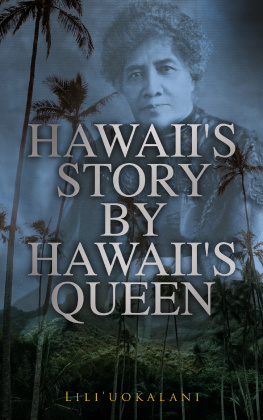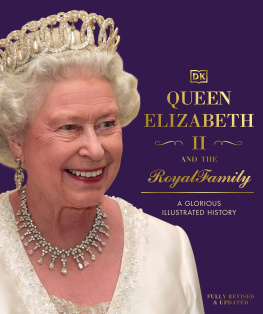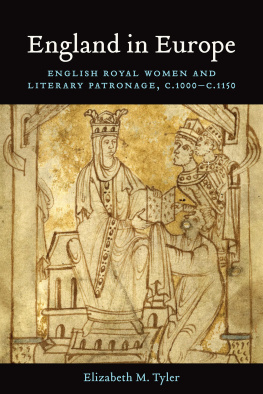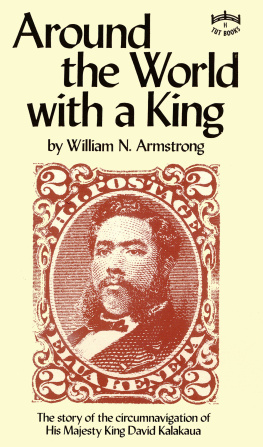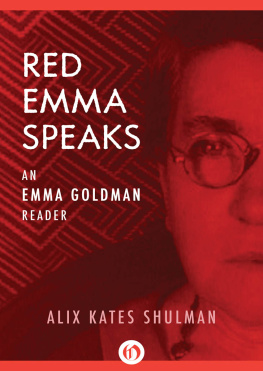iv
Copyright
2017 University of Hawaii Press
All rights reserved
Printed in the United States of America
22 21 20 19 18 17 6 5 4 3 2 1
Library of Congress Cataloging-in-Publication Data
Names: Emma, Queen, consort of Kamehameha IV, King of the Hawaiian Islands, 1836-1885, author. | Forbes, David W., editor. | Container of (work): Emma, Queen, consort of Kamehameha IV, King of the Hawaiian Islands, 1836-1885. Correspondence. Selections. | Container of (work): Emma, Queen, consort of Kamehameha IV, King of the Hawaiian Islands, 1836-1885.
Diaries. Selections.
Title: In haste with aloha: letters and diaries of Queen Emma, 1881-1885 / selected and edited by David W. Forbes.
Description: Honolulu: University of Hawaii Press, [2017] | Includes bibliographical references and index.
Identifiers: LCCN 2016041578 | ISBN 9780824857837 (hard cover; alk. paper) Subjects: LCSH: Emma, Queen, consort of Kamehameha IV, King of the Hawaiian Islands, 1836-1885Correspondence. | Emma, Queen, consort of Kamehameha IV, King of the Hawaiian Islands, 1836-1885Diaries. | HawaiiKings and rulersSocial life and customsSources.
Classification: LCC DU627.17.E45 E45 2017 | DDC 996.9/027092 [B]dc23 LC record available at https://lccn.loc.gov/2016041578
University of Hawaii Press books are printed on acid-free paper and meet the guidelines for permanence and durability of the Council on Library Resources.
To the memory of Emma Lyons Doyle (18791966), the Queens namesake who first interested me in the story.
ix
NOTES ON EDITING THE LETTERS
the letters in this volume written by Queen Emma to her intimate friend Flora Jones are now in the Hawaii State Archives, part of the Queen Emma Collection. The letters to Flora Jones written by Jennie Stillman and Jenny Mist are also in that collection. A single letter of the Emma-Flora series, dated July 3, 1883, and the typescript (only) of the May 3, 1885, letter from Eldress Phoebe to Flora on the Queens death, are found in the (separately filed) Flora Jones Collection, also in the Hawaii State Archives.
The notes to Mrs. Nahaolelua are in Bishop Restarisks scrapbook, in the Archives of the Episcopal Diocese of Honolulu at St. Andrews Cathedral. Emmas letters to Julia Akana (originals now unlocated) have been transcribed from photocopies in the Bishop Museum Library, and the five letters addressed to Jenny Stillman and her husband (the originals of which are owned by the Daughters of Hawaii) have been transcribed from photocopies in the Queen Emma Collection at the Hawaii State Archives.
The 1884 letter to Bernice P. Bishop, and the drafts of Emmas letters to Mrs. von Pfister and her daughter Sarah are also in the Queen Emma Collection. The single letter to Hanna Kaniau (Evans) has been transcribed from a published source identified at the conclusion of that transcription.
In addition to the letters, I have included portions of Emmas diaries for 1881 and 1884, the originals of which are in the Bishop Museum collection.
The observations of George Stewart, which describe the funeral of Queen Emmas mother at the beginning of this text, are from his unpublished journals in the California section of the California State Library, Sacramento.
The letters found in this volume were all written in English, and the reader will want to know why I have not included any of what must have been an extensive Hawaiian language correspondence. The answer is simply that, x with the exception of two very brief notes to Lucy Peabody (Henriques Collection, Bishop Museum), I have not been able to locate any. In her general correspondence, and by choice, Emma seems to have written primarily in English, and when she was addressing notes to her part-Hawaiian girls, the Queens intent was to familiarize them with English whenever possible, and insisted on their replying to her in English rather than in Hawaiian, for the same reason.
Although completely at ease with writing in English, Emmas spelling was sometimes uncertainand her punctuation can only be described as adventurous. It must be remembered however, that these were hastily written private communications, sent off without any thought of these ever being available for public examination. I have therefore silently corrected only the most awkward spellings and simple lapses of the pen, and some of the Queens frequent dashes have been replaced by full stops.
I have carefully tried to keep the body of each letter free from more than occasional editorial intrusion. Textual deletions have been made sparingly, and only occasionally. In one letter where the Queen has repeated almost exactly the same thought twice, I have omitted one of the sentences. In another letter where she has in mid-paragraph inserted a nonrelated and unimportant sentence, as a sort of quick thought, it has been silently removed so as to avoid a break in the flow of ideas. A few words have been interchanged for clarity of meaning, and I have occasionally inserted words (always in brackets) for the same reason. Words or sentences in Hawaiian have always been retained, and immediately following I have provided translations within brackets. Addresses and dates have been standardized.
The reader will also notice, with respect to Hawaiian words and phrases, that diacritical marks have been included only in my text and narrative. As they were not used in the nineteenth century, they have not here been inserted into my transcriptions of letters or any quoted texts of the period.
xi
ACKNOWLEDGMENTS
when this volume of queen emmas letters commenced it was intended to be a short interval project sandwiched between two longer publications, the first being the Hawaiian National Bibliography and the second a proposal to publish the letters and journals of Queen Liliuokalani. There were many interruptions and long pauses, but the work is presented now after almost fifteen years to the public. All along the way, I have been aided by many people.
Susan Shaner and Luella Holt Kurkjian of the Hawaii State Archives both read the manuscript and suggested important revisions and helped with the many footnotes.
At the Bishop Museum Library, B. J. Short and Tia Reber helped me with the two Queen Emma diaries that I have extensively quoted from. Desoto Brown of the Bishop Museum Photo Archives has been tireless in making important photo graphs available, and I appreciate his resourcefulness.
Another Emma enthusiast, Stuart Ching, archivist of the Episcopal Church records at St. Andrews Cathedral, made important records available, including the Queens letters to Lizzie Nahaolelua, found in Bishop Restaricks scrapbook.



